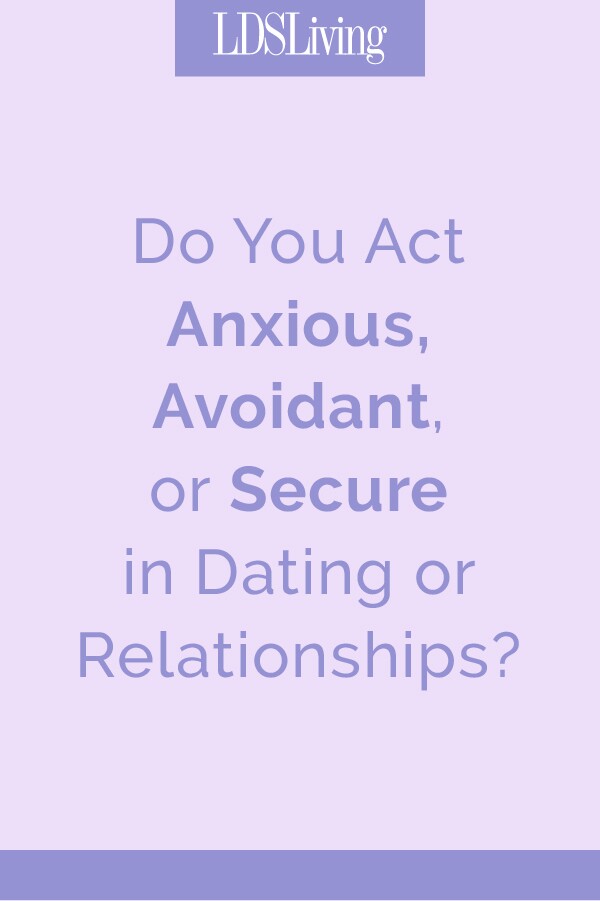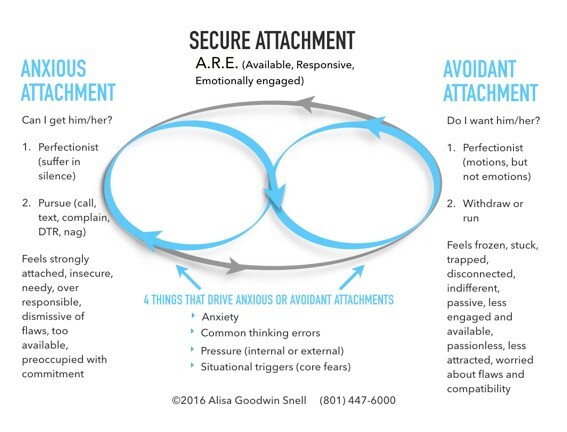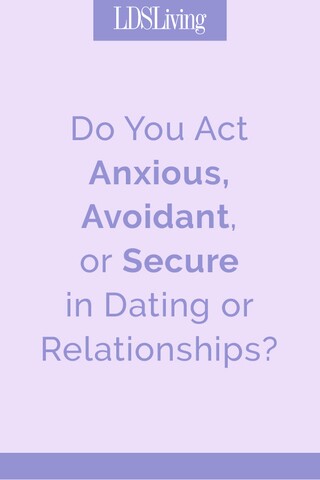
Everyone wants lasting love and secure attachments, but sadly many people don’t act in a way that supports such. For instance, singles often engage in a pursue/withdraw dance that appears too eager or too indifferent, whereas couples frequently get caught in patterns of criticism, nagging, and whining followed by withdrawal, resent, and disconnection (or vice versa). Discover if you’re acting anxious or avoidant in your dating and relationships and how you can become secure (individually and as a couple).
It is easy to describe what secure relationships look like but much harder to create them. Secure attachments only occur when both partners choose to be Available, Responsive, and Engaged (A.R.E.) relative to the other’s feelings, needs, and happiness [Johnson, Sue, Ph.D., Hold Me Tight, Seven Conversations for a Lifetime of Love, Little, Brown and Company; 1st edition (2008), pp 57-58].
The problem is, a partner’s behaviors can unintentionally push or drive the other (or even themselves) emotionally away from the relationship. For example, a woman who calls, texts, or encourages a date may seem too eager (evidence of anxious attachment) to which her potential date may unconsciously experience more apathy or decreased attraction (evidence of an avoidant response). A husband who feels that he’s unappreciated for all he does to please his wife may become indifferent to her complaints (evidence of avoidant feelings and behaviors) until her nagging (evidence of her anxious feelings and behaviors) can’t be ignored. To this, the wife might respond that it is his indifference and passiveness that drives her insecurities and subsequent nagging.

The solution to this pursue/withdraw dance is for both parties to learn how to recognize when they’re acting anxious or avoidant and to choose behaviors that are available, responsive, and emotionally engaged instead. This can be challenging if they don’t understand the 4 Things that Drive Anxious and Avoidant Attachments and how these things are affecting them, their partner, or the singles community (which is full of such issues).
It is natural for those who are anxiously attached to see themselves as the innocent victims who are being wronged by their partner’s passive behaviors. But it is important to steer clear of the all-too-common trend of criticizing the avoidant. If a parent died and had two children, one might grieve openly and seek comfort from others while the second might withdraw, act out, or become disengaged from others. Does that mean the second does not love and miss their parent? Those who respond to stress with avoidant emotions and behaviors still have attachments. They may disconnect emotionally but they rarely know why or how to stop it. They try to go through the motions, do the right thing, and engage, but they just don’t can’t make themselves feel the emotions they think they should feel. This makes them feel like victims too.
Those who struggle with anxious or avoidant attachment patterns in dating or relationships need to know there is hope, these patterns can be changed, they just need to know what to do and how to do it.




